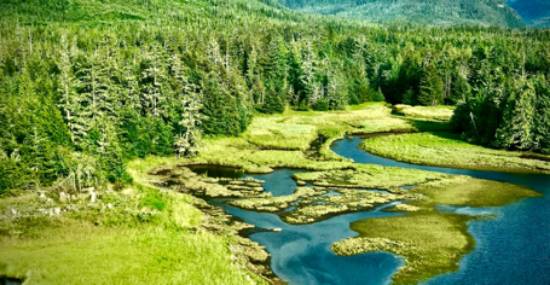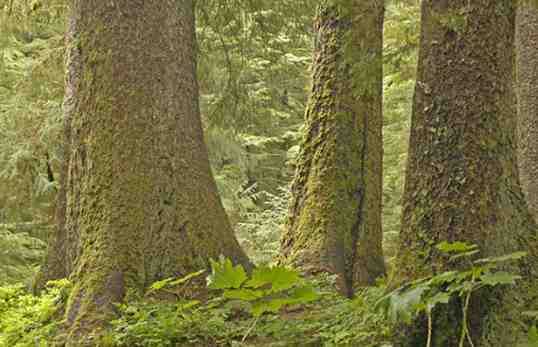The states of Alaska and Utah are currently seeking exemptions from the 2001 Federal Roadless Rule, and it is expected that the U.S. Department of Agriculture and U.S. Forest Service will release a draft Environmental Impact Statement for the Alaska rulemaking by the end of this month. This Alaska rulemaking, assuming a “No Action Alternative” is not the selected option, will have direct negative consequences for American’s largest national forest and one of the few largely intact temperate rainforests remaining in the world — the Tongass National Forest in Southeast Alaska — as all alternatives would increase access to old-growth logging.
On April 10, 2019, the House Natural Resources Subcommittee on National Parks, Forests and Public Lands held a hearing entitled “Examining the Spending Priorities and Missions of the U.S. Forest Service and the Bureau of Land Management.” Following that hearing, Representative Mike Quigley (D-IL) submitted Questions for the Record (QFRs) to the Forest Service regarding Roadless Rule exemptions. The Forest Service has replied to those questions, and a portion of its answers are discussed below.
During the past two decades, the Roadless Rule has established itself as one of our nation’s bedrock conservation protections intended to safeguard more than 58 million acres of our national forests. At its core, the Roadless Rule is about limiting costly and environmentally damaging roadbuilding and logging to help protect taxpayers and preserve wild, relatively intact roadless landscapes across the National Forest System. While preserving these places, the Roadless Rule also provides significant management flexibility for activities including mechanized recreation, connections between communities, hydropower development, mining access roads, wildfire response and public safety.
The Roadless Rule was adopted in 2001 after the most extensive public involvement process in the history of federal rulemaking. More than 1.6 million people commented during the rulemaking process with 95% supporting strong roadless area protection.
The value of the Roadless Rule in preventing environmentally damaging and economically wasteful road building and logging is particularly important in the Tongass National Forest, where logging costs vastly exceed timber revenues, and costly maintenance backlogs makes adding new roads fiscally unwise.
Opponents of the Roadless Rule in Alaska often frame the rule as a “job killer” that prohibits logging and restricts access in roadless areas. These arguments are disingenuous at best.
- In a response to Representative Quigley regarding project approvals in Alaska and Utah, the Forest Service states: “All 58 applications submitted for projects in Alaska roadless areas have been approved. The majority of them pertain to surface exploration of potential mining and hydropower. On October 24, 2018 Chief Christensen delegated authority for all exceptions to the Regional Foresters in an effort to better support agency decision-making. Projects within Alaska and Utah under the delegated authority of the Regional Forester generally take one to three weeks for approval. Projects that previously required approval from the Chief took from one to three months for approval.”
- Bottom line: 100% of Roadless Rule exemption applications in the Tongass have been approved to date, and that approval time has been accelerated from 1-3 months to just 1-3 weeks. Opponents of the Roadless Rule have failed to demonstrate any concrete evidence of the rule as an impediment to local projects.
- There are already 5,000 miles of permanent roads in the Tongass, and more than five billion board feet of timber is potentially available from this existing road network. What’s more, only 23 percent of these roads are currently open to passenger traffic. According to the U.S. Forest Service, this subset of roads is sufficient to meet connectivity, recreation and other community needs, meaning that the remaining 77 percent exist for timber access and extraction only.
- Bottom line: There are 5,000 miles of permanent roads in the Tongass, three-quarters of which are reserved for logging — and those roads have access to billions of board feet of timber already. Asking taxpayers to foot the bill for new roads is unnecessary at this time.
- The very first QFR asked by Representative Quigley concerns road maintenance backlogs nationally, as well as in Utah and Alaska. The Forest Service response: “The current Forest Service road maintenance backlog as discussed in the FY 2020 Congressional Justification is $3.4 billion, including road bridges, on our passenger car network. In Utah, the backlog is $112 million, and in Alaska the road maintenance backlog is $68 million.”
- Bottom line: Building new and costly roads — roads that likely will benefit only the timber industry — at a time when current Forest Service road maintenance needs have ballooned to $68 million and counting makes zero fiscal sense.
New road-building in undeveloped roadless areas in Southeast Alaska is unnecessary. The timber industry makes up just a tiny fraction of the region’s economy — around 1% — and not only does it not bid on many Forest Service sale offerings, it exports much of what it does log overseas without creating local mill jobs. On the other hand, more roads and increased logging would threaten the abundant wildlife and beautiful scenery essential to tourism in Southeast Alaska, an industry that contributes more than $1 billion dollars to the region each year and accounts for 15 percent of the region’s employment. And this rulemaking could also endanger the region’s commercial fishing industry that employees 4,300 people (9% of regional employment) and relies on the Tongass National Forest for 80% of its salmon harvest.

[content id=”79272″]
In addition, the warped economics of federal subsidies are magnified in the Tongass, and this rulemaking will only add to the federal waste. On average, and if all roadbuilding and timber sale costs on the Tongass are taken into account, the Tongass timber sale program costs taxpayers approximately $26 million each year while yielding just $1.3 million in return, for an average loss of more than $24 million per year during the last 20 years largely due to the exorbitant costs of building and maintaining new logging roads. In contrast, since its adoption in 2001, the Roadless Rule has saved taxpayers millions of dollars per year by reducing federal subsidies for logging roads, especially in the Tongass National Forest where road construction costs are roughly $185,000 per mile. Costs can be as high as $322,000 per mile when building roads on steep slopes. And in the Tongass, there are already 5,000 miles of permanent roads and more than five billion board feet of timber potentially available from the existing road network.
The Roadless Rule is one of the smartest and most popular land management policies that the federal government has ever adopted. Not only has it preserved some of America’s best fish and wildlife habitat — areas essential to the real drivers of the region’s economy like recreation, tourism, guiding and fishing — but it has also saved untold millions of taxpayer dollars that might otherwise have been spent to subsidize money-losing timber sales. However, if the Alaska roadless rule process continues to move forward and rolls back protections on the Tongass National Forest, U.S. taxpayers will foot the bill for a very hefty subsidy to Alaska’s timber industry — on top of the millions of dollars they are already paying each year to keep the timber industry afloat.
The Tongass is where people come to see Alaska, where more than 1 million people year come to experience a biologically diverse temperate rainforest that draws outdoor adventurers, boaters, birders, hunters, and anglers. An intact Tongass supports a robust Southeast Alaskan economy through tourism, commercial and sport fishing, and small businesses. Its old-growth provides irreplaceable wildlife habitat for myriad species including wild Pacific salmon, Alexander Archipelago wolves, Sitka black-tailed deer, and some of the largest concentrations of brown bears and bald eagles found anywhere in the world.
The Tongass also serves as a buffer against climate change as stands of ancient trees quietly absorb and store more carbon per acre than almost any forest on Earth. The Tongass absorbs approximately 8 percent of the nation’s annual global warming pollution and stores an estimated 10-12 percent of all carbon in our national forests. Current Tongass protections have also extended to cultural and sacred sites of great importance to Alaska Native people, who rely upon the Tongass for spiritual and subsistence practices.
Moving forward with an Alaska-specific rule is wrong for the Tongass and wrong for Southeast Alaska.




